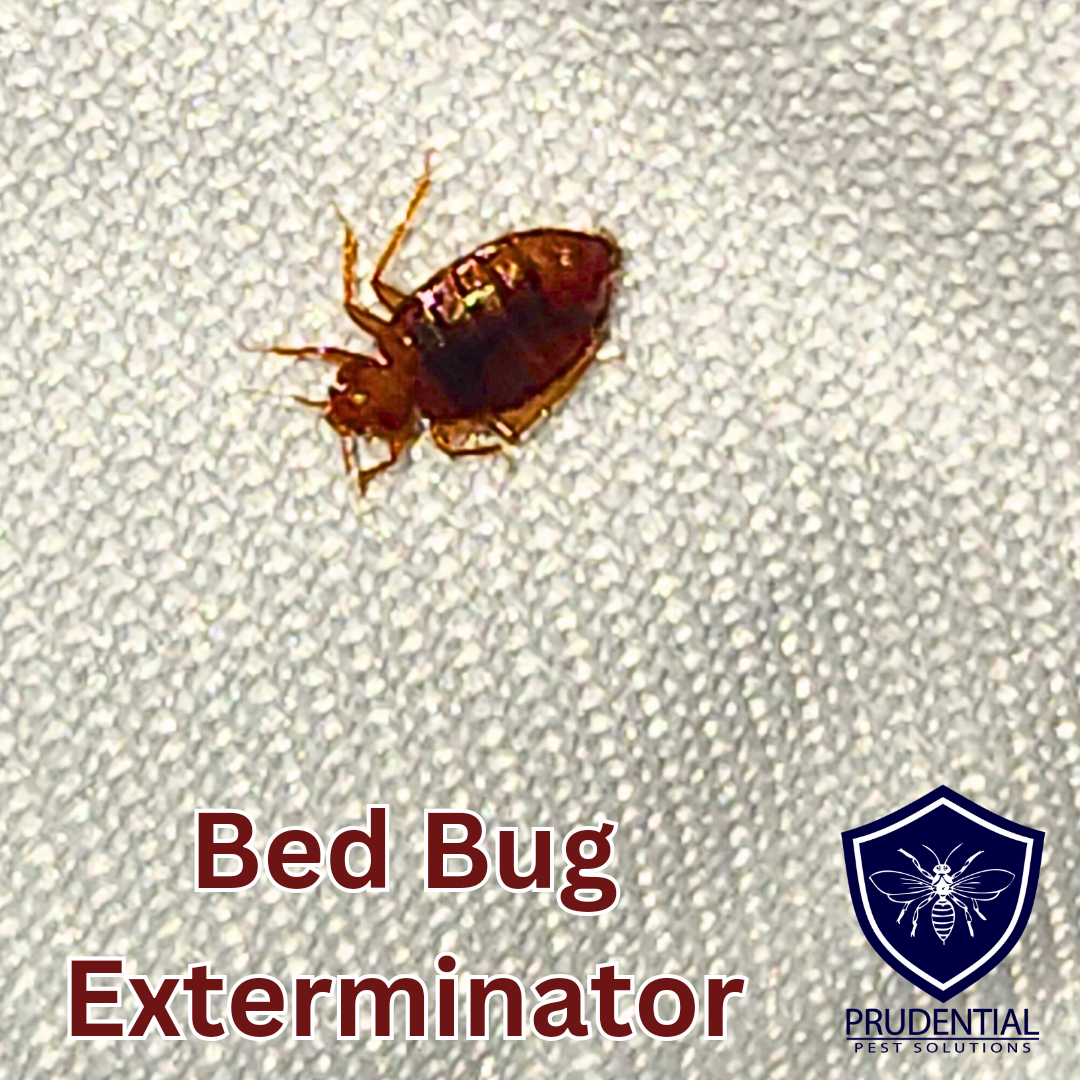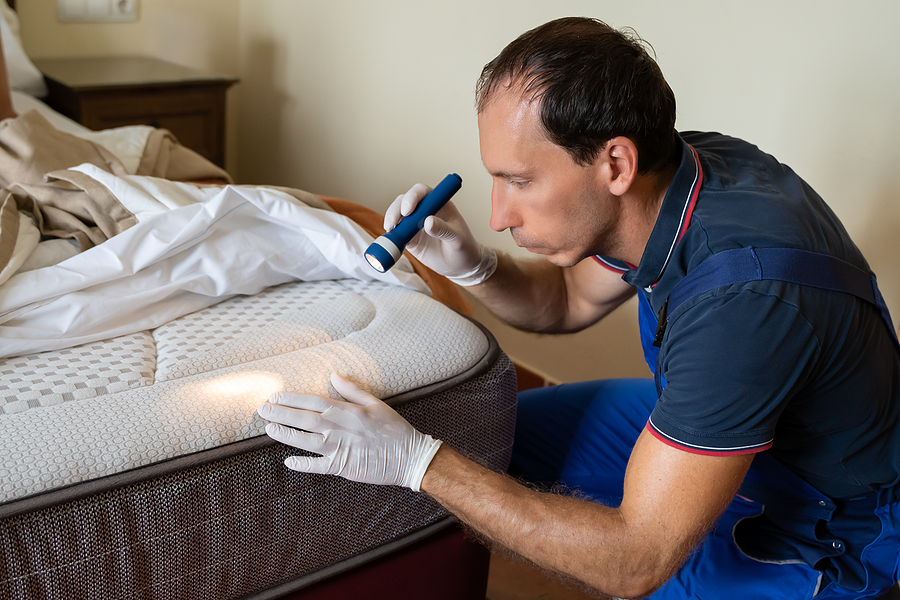Obtain Enlightened Regarding the Kinds Of Bug Control Approaches and Their Advantages for Homeowners
Comprehending the various insect control techniques offered to home owners is essential for reliable parasite monitoring. From chemical and organic methods to cultural and mechanical techniques, each technique offers distinct benefits that can dramatically impact both health and wellness and ecological security. Home owners that are educated can make calculated options that not only address pest issues yet likewise improve the total quality of their living environment. As we check out these methods better, it comes to be clear that the decision-making procedure includes more than simply prompt results; it touches on lasting sustainability and wellness. What aspects should affect these important choices?
Chemical Bug Control Techniques
Chemical bug control approaches are an essential component of integrated pest management techniques for house owners seeking efficient remedies to pest invasions. These approaches entail the application of chemical materials made to get rid of or discourage insects that threaten personal effects, health and wellness, and convenience. Common chemicals utilized include insecticides, rodenticides, fungicides, and herbicides, each tailored to target particular pests.
The main advantage of chemical pest control is its rapid efficiency; many solutions give immediate outcomes, reducing pest populaces considerably in a short time. Additionally, advancements in chemical solutions have resulted in products that are much more eco-friendly and have lower poisoning degrees for non-target organisms when used properly.

Organic Pest Control Techniques
Natural insect control methods have acquired importance as homeowners seek safer and a lot more sustainable choices to conventional chemical methods. Biological parasite control techniques make use of all-natural killers, bloodsuckers, or microorganisms to handle bug populaces effectively. This technique is not just eco-friendly however additionally lessens the risk of damage to non-target species, consisting of advantageous pests and wild animals.
Among the most usual biological control methods involves introducing natural predators into the environment. Ladybugs can be made use of to manage aphid populations, while nematodes target soil-dwelling insects like grubs. Additionally, parasitoids-- microorganisms that survive on or within a host-- can be utilized to control certain insect species by laying eggs inside them, ultimately leading to their death.
Another technique is using biopesticides, which are derived from all-natural materials such as plants, bacteria, or minerals (bed bug exterminator). These products can efficiently target insects while positioning minimal threat to humans and pet dogs. On the whole, biological bug control methods give property owners with an efficient means of insect administration that aligns with ecological principles, advertising a much healthier living environment while minimizing reliance on synthetic chemicals
Mechanical Insect Control Approaches
Mechanical bug control methods include a important site selection of methods that physically protect against or eliminate insects without using chemicals. These strategies are specifically useful for homeowners looking for ecologically pleasant choices while making sure the security of their home.
One usual approach is making use of obstacles, such as nets, displays, and catches, which stop pests from going into homes or certain locations. Setting up home window displays can efficiently keep bugs out, while using physical obstacles around yards can hinder bigger bugs like bunnies or deer. In addition, mechanical traps made for rats can capture and remove these parasites without the requirement for hazardous substances.
One more reliable approach involves using vacuum cleaners and mops to get rid of bugs straight from surfaces. Regular cleansing and maintenance can considerably minimize insect populaces by eliminating food sources and hiding places. In addition, using devices like ultrasonic bug repellents can discourage numerous bugs with acoustic wave that are unpleasant to them but inaudible to people.
Social Insect Control Practices
Social parasite control practices concentrate on changing the environment and monitoring strategies to develop conditions that are much less for pest infestations. These you can try these out methods are essential in keeping a well balanced environment and decreasing the dependence on chemical interventions. By changing farming techniques, property owners can successfully deter pests while advertising plant health and wellness.
One common strategy consists of plant rotation, which interrupts the life process of parasites by transforming the kinds of plants grown in a certain area (bed bug exterminator). This not only decreases pest populaces but likewise improves soil wellness. Furthermore, intercropping-- planting diverse crops in proximity-- can confuse pests and reduce their ability to locate their preferred host plants
Water administration is one more essential facet of social methods. Correct irrigation techniques can avoid standing look at this web-site water, which functions as a breeding ground for insects and various other pests. Additionally, keeping tidiness in and around the home, such as consistently removing debris and food waste, can dramatically reduce pest attraction.
Including these social methods into an extensive insect management strategy permits home owners to create a setting that naturally hinders bugs, thus enhancing the effectiveness of various other control approaches while promoting sustainable gardening and landscaping.

Integrated Pest Monitoring Approaches
Integrated Parasite Monitoring (IPM) stands for an alternative approach that combines different techniques to effectively handle parasite populations while decreasing ecological effect. This methodology incorporates organic, cultural, physical, and chemical techniques to achieve lasting insect control. By assessing pest populations and their natural adversaries, IPM highlights surveillance and recognizing bugs before executing control steps.
Among the core principles of IPM is making use of thresholds, which develop the level of bug activity that warrants intervention. This makes certain that treatments are applied just when essential, lowering the dependence on chemical pesticides. Organic control techniques, such as introducing all-natural predators or parasites, operate in combination with social techniques like crop turning and habitat adjustment to disrupt pest life cycles.
Moreover, IPM motivates the use of least-toxic chemical choices when intervention is required, prioritizing products that present marginal danger to non-target organisms and the setting. For homeowners, embracing IPM comes close to not only enhances the efficiency of parasite monitoring however likewise promotes a healthier living atmosphere, cultivating biodiversity and reducing chemical direct exposure. Eventually, IPM equips homeowners to make informed decisions that balance insect control with eco-friendly responsibility.
Final Thought
In final thought, comprehending the different bug control approaches equips house owners to make enlightened decisions relating to pest management. Each approach-- chemical, organic, mechanical, social, and incorporated pest administration-- uses distinctive benefits that cater to various demands and choices.
Comprehending the different parasite control methods available to home owners is necessary for effective bug administration.Chemical insect control approaches are a vital element of integrated insect management strategies for property owners seeking effective remedies to pest invasions. In general, organic parasite control methods provide property owners with a reliable ways of parasite administration that straightens with environmental principles, advertising a healthier living atmosphere while decreasing reliance on synthetic chemicals.
Cultural bug control techniques focus on changing the atmosphere and administration methods to create conditions that are much less conducive to pest problems.In final thought, comprehending the various bug control methods empowers house owners to make informed decisions pertaining to pest monitoring.